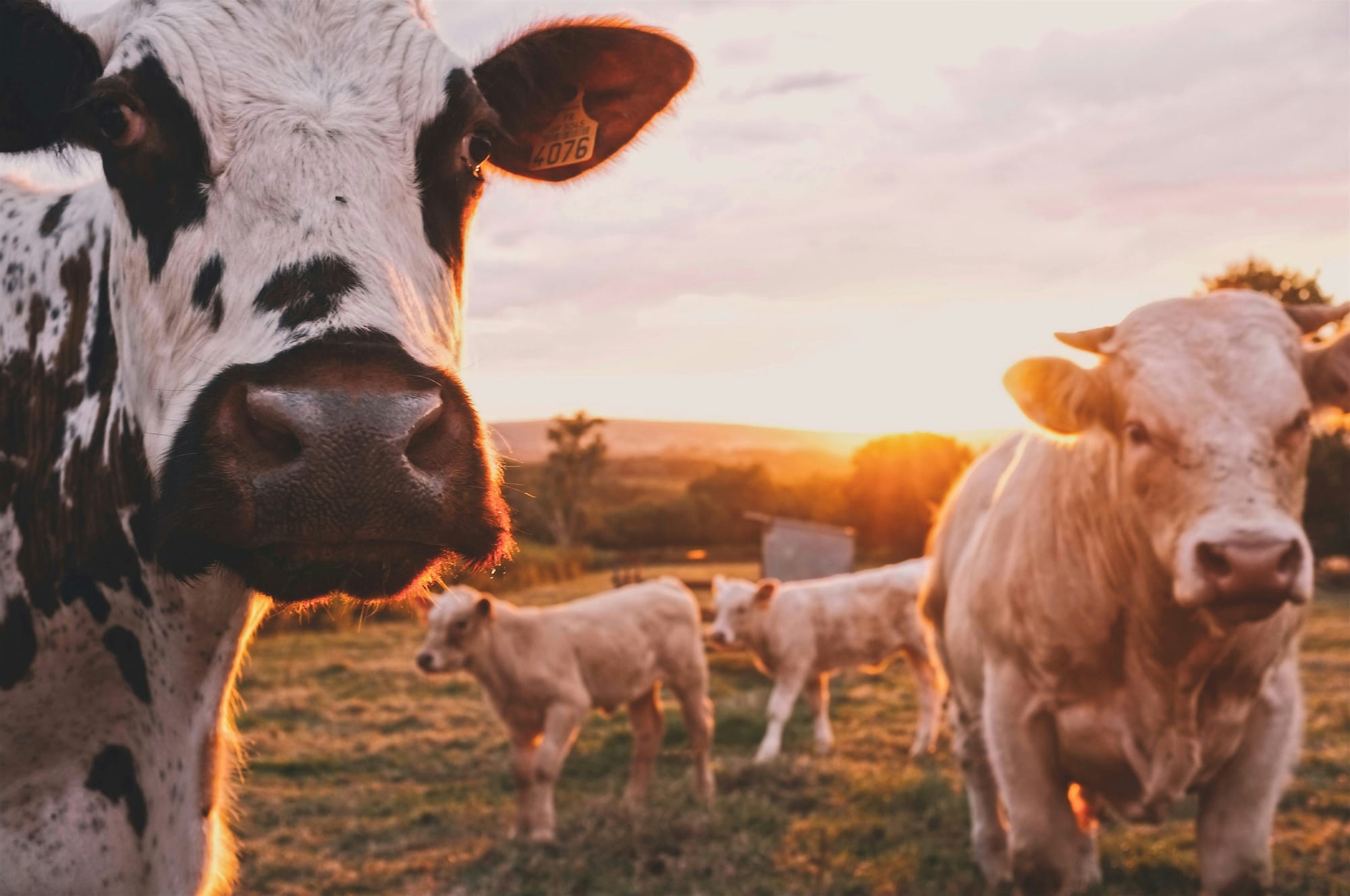Photo by Stijn te Strake on Unsplash
Although the population of humans has grown exponentially, doubling in the last 50 years and increasing four-fold in the last century and 25-fold in the last thousand years, the total mass of all humans is still only 3% of all animals. And yet, because of human advantages of technology, it has caused a seven-fold loss in global wild land mammal mass, a five-fold loss in wild marine mammal (whale) mass, and a two-fold loss in global plant mass.
Such reductions tell only part of the story, as wild ecosystems have been replaced by monocultures of agriculture, forestry, and animals. Biodiversity has suffered tremendously. Domesticated livestock mass is 14 times greater than wild mammal mass.
Biodiversity loss matters not just to the species directly impacted, but to humans as well. Our lives depend on the health of the ecosystems of species that produce the food we eat and the oxygen we breathe. Bees, for example, pollinate nuts and fruit, and the alfalfa that dairy cows feed on. But the number of wild bees and other pollinators has declined over the last 50 years. While domesticated beekeeping has increased, its growth has lagged behind that of pollinated crops, increasing crops’ reliance on wild pollinators.
Similarly, wild plants, microorganisms, and animals are the source of one-third of modern drugs and 60–80% of antibiotic and anticancer drugs. Sixty thousand species of plants and fungi have medicinal value. But 45% of known plant species are at risk of extinction.
While humans depend on photosynthesis to produce all of the oxygen we breathe, the amount of oxygen in the atmosphere is sufficiently large enough to last thousands of years without sustainable production by healthy ecosystems.
However, healthy ecosystems’ sustained removal of carbon dioxide from the atmosphere is essential to restoring carbon dioxide concentrations to levels that our civilization is adapted to. One-fourth of the carbon dioxide emitted by human activities is removed from the atmosphere by plants on land. All plans to stabilize climate change assume sustained removal by natural processes. Nevertheless, that removal mechanism vanishes if terrestrial ecosystems collapse and reverse, becoming emissions into the atmosphere as plants wither and burn.
So, healthy ecosystems perform vital services to humanity in these and numerous other ways. While domestication can partially fill in some of these roles, more is needed to replace the complexity and diversity of natural ecosystems that have served humanity well.
The primary justification for preserving ecosystems has been the services they provide. These services are not limited to just the products extracted from them. Also included are regulatory services such as the aforementioned pollination, flood regulation, climate regulation, and water purification; cultural services such as spiritual renewal, recreation, and aesthetic appreciation; and supporting services necessary for a healthy ecosystem to flourish.
Recognizing this, in December 2022, the United Nations released the Kunming-Montreal Global Biodiversity Framework (GBF), which set a 2030 goal of “effective conservation and management of at least 30% of the world’s lands, inland waters, coastal areas, and oceans, with emphasis on areas of particular importance for biodiversity and ecosystem functioning and services.” Only 17% of land and 10% of ocean areas are protected.
What You Can Do
Setting goals is the first step, but they will only be achieved with a path in which to follow. The GBF targets reducing food waste but does not mention reducing beef consumption. According to the World Wildlife Federation, beef and soy production are driving two-thirds of the destruction of the Amazon rainforest. More than 70% of the soy grown feeds livestock. Since it takes 100 times as much land for beef or lamb to produce the same amount of calories and protein as for plant-based food, a shift to a plant-based diet could reduce the land required to feed the world by a factor of four. So, help by replacing beef and lamb in diets with plant-based food and encourage others to do so.
Beef and lamb production is increasing because, as the WWF acknowledges, incomes are rising in the developing world. When the incomes of poor people rise, they tend to switch from eating plants to eating beef.
Why should everyone avoid beef? It is more than its impact on global ecosystems, biodiversity, and beef’s methane emissions. Next month, I will review a book that makes a compelling case for the health benefits of a plant-based diet.
Climate scientist Steve Ghan eats neither beef nor lamb.


